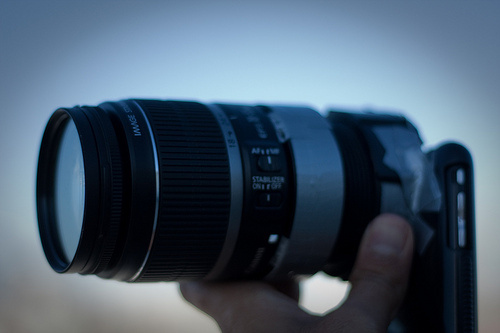 iPhone's have been on my mind recently as E just had hers brazenly stolen straight out of her hand on the metro last week. I may be just a bit behind the curve writing about the iPhone when Apple have just launched their new revolutionary (and badly named) iPad, but I recently received an email from Chicago-based Jeremy Edwards with information about his From the Pocket iPhone photography project, a kind of visual diary of his city, which he is planning to publish as a series of print-on-demand books starting this year. His site comes with a kind of (dis)claimer, "All of the images featured on this site were captured using iPhone cameras. Images were processed using various iPhone photography applications only." Jeremy calls himself an iPhoneographer and refers to photographs taken with an iPhone as a specific genre, "iPhoneography".
iPhone's have been on my mind recently as E just had hers brazenly stolen straight out of her hand on the metro last week. I may be just a bit behind the curve writing about the iPhone when Apple have just launched their new revolutionary (and badly named) iPad, but I recently received an email from Chicago-based Jeremy Edwards with information about his From the Pocket iPhone photography project, a kind of visual diary of his city, which he is planning to publish as a series of print-on-demand books starting this year. His site comes with a kind of (dis)claimer, "All of the images featured on this site were captured using iPhone cameras. Images were processed using various iPhone photography applications only." Jeremy calls himself an iPhoneographer and refers to photographs taken with an iPhone as a specific genre, "iPhoneography".
This reminded me that a few months back I had been surprised to discover that Joel Sternfeld, one of the big names of American colour photography known for his large-format work, was going to publish a book of photographs of Dubai entitled iDubai taken exclusively with an iPhone (amusingly iDubai is also the name of a 50-storied residential development), and I've caught glimpses of other iPhone photography projects since. The impact of the iPhone is not limited to photography either. There was quite a bit of excitement when the New Yorker featured a cover 'painted' using the iPhone application Brushes and a few 'serious' painters and draughtsmen like David Hockney have begun to use the iPhone instead of a paintbrush or pencil.
In relation to painting and drawing, the iPhone does seem to offer something genuinely new to artists. This kind of pocket-sized touchscreen technology is groundbreaking and it goes far beyond what carrying around a pen and paper can offer. I don't have much experience using computer software to draw or paint, but it seems to me that being able to cut out the mouse and to be able to draw with your finger directly on to a screen must feel far more immediate and intuitive. I have yet to see any iPhone art that I have enjoyed in and of itself rather than thinking, "that is quite impressive for something produced on an iPhone," but I'm sure I will soon enough.
However, when it comes to photography I fail to see what distinguishes photographs taken with an iPhone from photographs taken with any other cameraphone. One of the big gripes people have with the iPhone is that the camera isn't all that great, although that has been improved on more recent models. I find mine to be noticeably worse than on my previous cameraphone. The touch-screen is irrelevant in the process of taking a photograph: what difference does it make whether you press an actual button or one that appears on your screen? So what is it that has made people so excited about the iPhone as a camera. Is it the iPhone applications that allow you to edit photographs on your phone directly instead of having to upload them to a computer first? While I think that apps are really one of the greatest innovations about the iPhone, I don't see how this brings much to the table in terms of photography. Sure there are now lots of applications that are essentially extremely basic versions of Photoshop, allowing you to make a photograph look like a Polaroid or apply a virtual selenium toner, but I don't see the advantage of being able to do this instantly instead of waiting a few hours and doing it on a computer with better quality photo-editing software. iPhoneography strikes me as more of a brand name than a distinct photographic practice. In that sense it is closer to Lomography, the craze that two very marketing-savvy Austrian students managed to create around the Russian Lomo Kompakt Automat camera.